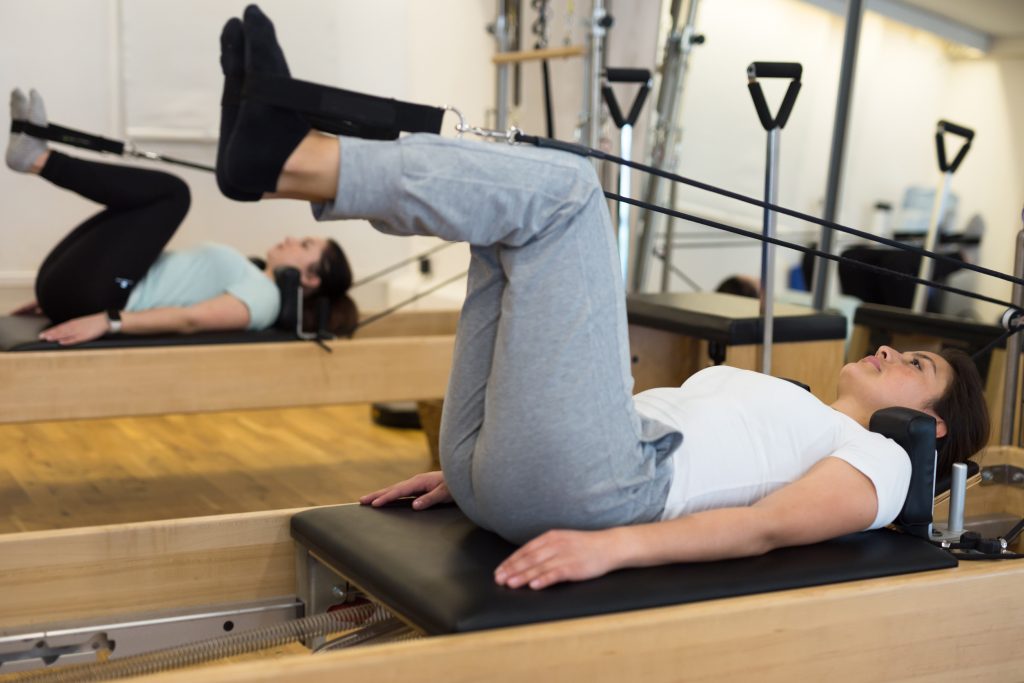
www.optimistdaily.com
7 pilates mistakes instructors notice (and what to do instead)
BY THE OPTIMIST DAILY EDITORAL TEAM
Pilates isn’t about going harder or faster. It’s about precision. To an outsider, it can look like “not much,” because the work happens in tiny, controlled ranges. “It might feel very different than what you’re used to,” says certified instructor Jennifer Phelan, founder of JPPilates in Boston. If you bring over habits from other workouts, you can miss the magic. Here’s what instructors most want you to stop doing and exactly what to do instead.
1) Rushing every rep
Pilates builds strength by moving steadily and controlling momentum so your muscles, not the swing of your limbs, do the work. When you speed through, you lose form and results. “Faster doesn’t mean that it’s harder or better,” Phelan says. “In fact, it’s really challenging to move at a slow and mindful speed.” Chelsea Stewart, founder of HAVN Hot Pilates in Denver, adds, “When you’re going so fast, the integrity of the move has now gone away.”
Do this instead: Follow the tempo your instructor sets and let form dictate your pace. Keep your spine neutral, hips even, and imagine your pelvis as a level bucket of water. “If you’re pushing your butt back [or] too far forward, then the water spills out,” Stewart says. Keep the bucket level and the pace will take care of itself.
2) Holding your breath
Breath is built into Pilates choreography, and it matters for strength and stability. “The breath is just as important as the actual movement,” Phelan says. Skip it and everything feels harder. “When you’re coming up to a full teaser from a lying down position, if you don’t breathe, your performance will not be good,” says instructor Nofar Hagag, founder of Nofar Method. Stewart notes that exhaling on a contraction deepens engagement: “Even just sitting down, if you contract your core and exhale, you’ll see how much more activation you can get instead of just trying to contract.”
Do this instead: Inhale on the lengthening phase; exhale on the contraction. During Double Leg Stretch, breathe in as arms and legs reach away; breathe out as you curl everything back to center. If you forget, start by making your exhale audible and your inhale will reflexively follow.
3) Turning class into coffee catch-up
Pilates is trendy, which can make the studio feel social, but be careful of mid-class chatter. It derails focus. Stewart sees groups who “go get coffee after, and they’ll start talking,” and master instructor Carissa Fernandez says it happens weekly. Beyond distracting others, talkers often underwork the moves. As Stewart puts it, “You don’t want to spend 45 minutes to an hour half-assing your workout and then be like, ‘Oh my gosh, I have to go work out again.’”
Do this instead: Treat the session like an appointment with your body, then catch up after class. If temptation strikes, set up on opposite sides of the room. Or swap studio chat for a post-class walk where venting and steps both count.
4) Bringing your inbox to the reformer
Watches pinging, phones buzzing, Zooms secretly running… Hagag has seen it all. But divided attention blunts results: “If you’re not present in the workout, you really get only 50 percent of the benefit, in my opinion,” she says.
Do this instead: Leave your phone outside the studio when possible and set your watch to Do Not Disturb. Stewart frames the pause as practice: “It’s the ultimate trust-fall that everything is going to be okay for 45 minutes to an hour.” On call? Tell the instructor; some studios will keep your phone at the front and alert you only if needed.
5) Comparing yourself to your neighbor
Long lines and lifted legs tempt comparison, but copying someone else’s range can miss the point. “Pilates isn’t about how you look, but how you feel when you’re practicing it,” Phelan says. A straighter leg does not equal better work—“You just might not be as flexible as them, but you’re still working your core in the same way.” Hagag adds, “Everyone has a different body, different needs.”
Do this instead: Keep your eyes on your breath and alignment. Choose springs and ranges that suit your body today. If you catch yourself peeking around, try a few reps with eyes closed to refocus inward.
6) Letting your outfit fight your form
There is no one right “Pilates aesthetic,” but some clothes make coaching harder. “I don’t love when clients show up wearing really baggy, loose-fitting clothes,” Phelan says. “If I can’t see your spine moving or what’s happening in your pelvis, it can be really tricky for me to give feedback.” Fernandez has even seen jeans in class: “It’s a little hard to get your dexterity in your knees when you’re wearing hard pants.” And mind the sock policy: some studios require grip socks for traction and hygiene; others prefer bare feet for feel. Regular cotton socks can send you slipping.
Do this instead: Choose comfortable, form-fitting, stretchy layers, especially around the low back and pelvis. That way, instructors can see alignment, and you can move freely. Forgot gear? Studios often sell basics up front.
7) Staying silent when something’s off
Your instructor can tailor everything if they know what you need. “It’s easy to modify everything,” Fernandez says. “We just need to be aware of what we have to modify.” Phelan adds, “You’re going to get a way better experience if you let your instructor know what’s happening.”
Do this instead: At the start of class, share if you’re new, pregnant, or working with an injury. “You don’t need to do a deep dive—a couple of sentences letting your teacher know what’s going on,” Phelan says. Not comfortable speaking up in front of the room? Pull the teacher aside or email ahead. Phelan notes, “I get emails from students who will say, Hey, I got injured last weekend. Is there anything I should know before class?” Mid-class twinge? Make eye contact or raise a hand so they can adjust you.
Pilates rewards presence, patience, and precision. Even seasoned students slip on these habits sometimes. Stewart admits she has to “check in, slow down, and remind [herself] that form and alignment is key!” Stay consistent, keep your focus, and trust the process. As Stewart reassures newcomers: “Do not worry. You are going to be great.”The post 7 pilates mistakes instructors notice (and what to do instead) first appeared on The Optimist Daily: Making Solutions the News.










